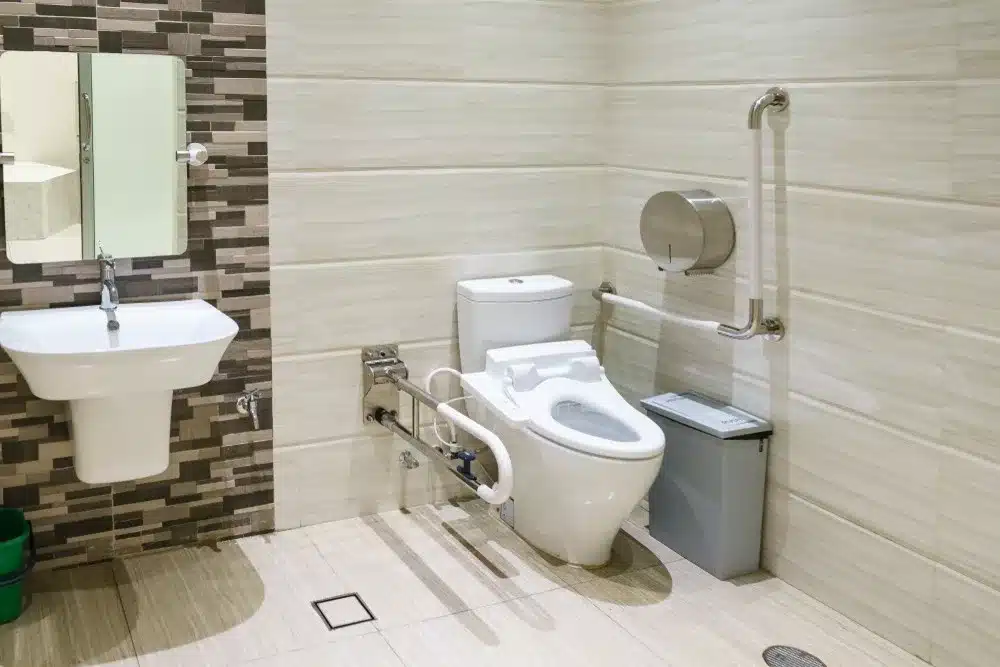Arthritis can make everyday tasks challenging, especially in the bathroom, where slippery surfaces and hard-to-reach fixtures can pose significant risks. For individuals living with arthritis, bathroom adaptations are crucial to enhance safety and comfort. In this article, we will explore various ways to modify your bathroom to accommodate the needs of those with arthritis, ensuring a safer and more accessible environment.

Understanding Arthritis and Its Impact on Mobility
Arthritis is a condition that affects the joints, causing pain, swelling, and stiffness. These symptoms can significantly impact mobility, making it difficult to perform everyday tasks. In the bathroom, tasks such as bathing, using the toilet, and grooming can become daunting. For more insights into arthritis, you can visit the Intrepid USA website.
Challenges Faced in the Bathroom
The bathroom environment presents unique challenges for those with arthritis. Slippery floors, high bathtubs, and hard-to-reach faucets can increase the risk of falls and injuries. Therefore, implementing bathroom adaptations for arthritis is essential to reduce these risks and promote independence.
Essential Bathroom Adaptations for Arthritis
1. Installing Grab Bars
Grab bars are one of the most effective bathroom adaptations for arthritis. They provide stability and support when entering or exiting the shower or bathtub. Ensure they are securely mounted at the appropriate height and location for easy access. For more tips on grab bar installation, check out the equipment installation guide.
2. Anti-Slip Flooring Solutions
Slippery floors can be hazardous for individuals with arthritis. Consider replacing them with non-slip flooring options or adding anti-slip mats to reduce the risk of falls. Additionally, ensure that rugs are securely fastened to prevent tripping.
3. Adjustable Shower Heads
Adjustable shower heads with long hoses allow for greater flexibility and ease of use. They enable users to direct the water flow where needed without having to move excessively, reducing strain on painful joints.
4. Raised Toilet Seats
For those with arthritis, sitting and standing from a low toilet seat can be challenging. Installing a raised toilet seat can make this process easier and more comfortable. Consider a model with armrests for additional support.
5. Lever-Style Faucets
Traditional faucets can be difficult to operate for individuals with arthritis. Lever-style faucets require less force and are easier to use. They can be installed in sinks, showers, and bathtubs for improved accessibility.
6. Walk-In Bathtubs
Walk-in bathtubs are an excellent bathroom adaptation for those with arthritis. They eliminate the need to step over high tub walls, reducing the risk of falls. Many models also feature built-in seats and grab bars for added safety.
7. Shower Chairs and Benches
Shower chairs and benches provide a safe and comfortable seating option for individuals who find it difficult to stand for long periods. Ensure that the chair or bench is stable and has non-slip feet.
8. Motion-Activated Lighting
Good lighting is crucial for bathroom safety. Motion-activated lights ensure that the bathroom is well-lit whenever it is in use, reducing the risk of falls due to poor visibility. For more tips on lighting, visit better lighting.
Additional Tips for Enhancing Bathroom Safety
Organizing Bathroom Essentials
Keep frequently used items within easy reach to minimize the need for bending or stretching. Use shelves, organizers, or caddies to keep items organized and accessible.
Regular Maintenance and Inspections
Regularly inspect grab bars, shower heads, and other installed equipment to ensure they remain secure and in good working condition. Address any issues promptly to maintain a safe environment.
Conclusion
Implementing bathroom adaptations for arthritis can significantly improve safety and comfort for individuals living with this condition. By making thoughtful modifications, such as installing grab bars, using anti-slip flooring, and incorporating adjustable fixtures, you can create an accessible and secure bathroom environment. For more tips on bathroom safety, visit the caregiver tips page.

Frequently Asked Questions
What are the best grab bars for arthritis?
Grab bars with textured grips and a diameter that is easy to hold are ideal for individuals with arthritis. Ensure they are installed securely and at a convenient height for the user.
How can I make my bathroom floor less slippery?
Consider installing non-slip flooring or adding anti-slip mats to reduce the risk of falls. Ensure that rugs are securely fastened to prevent tripping.
Are walk-in tubs safe for seniors with arthritis?
Yes, walk-in tubs are designed to be safe for seniors with arthritis. They have low-entry thresholds, built-in seats, and grab bars, reducing the risk of falls and making bathing safer and more comfortable.
This article contains affiliate links. We may earn a commission at no extra cost to you.

